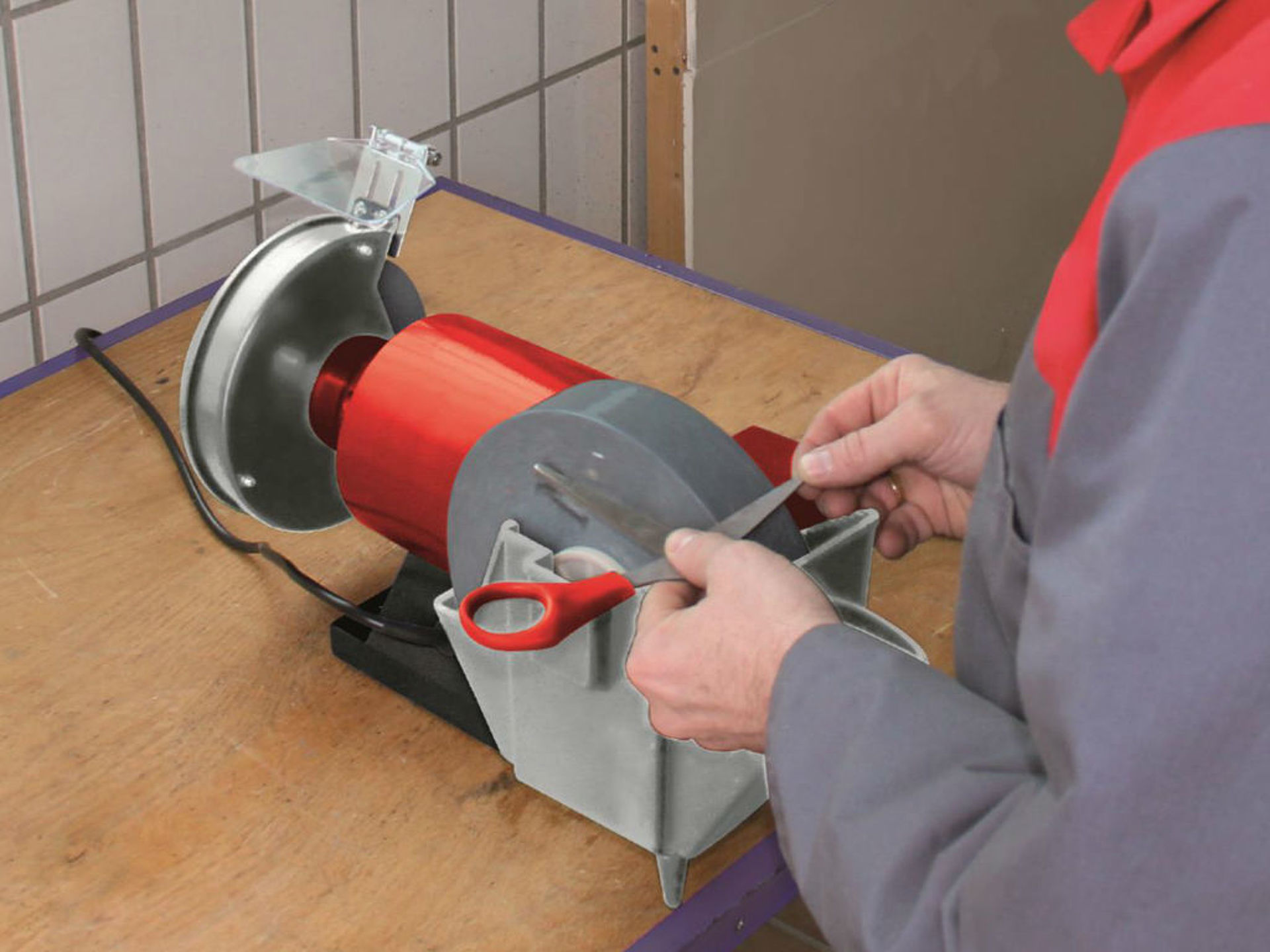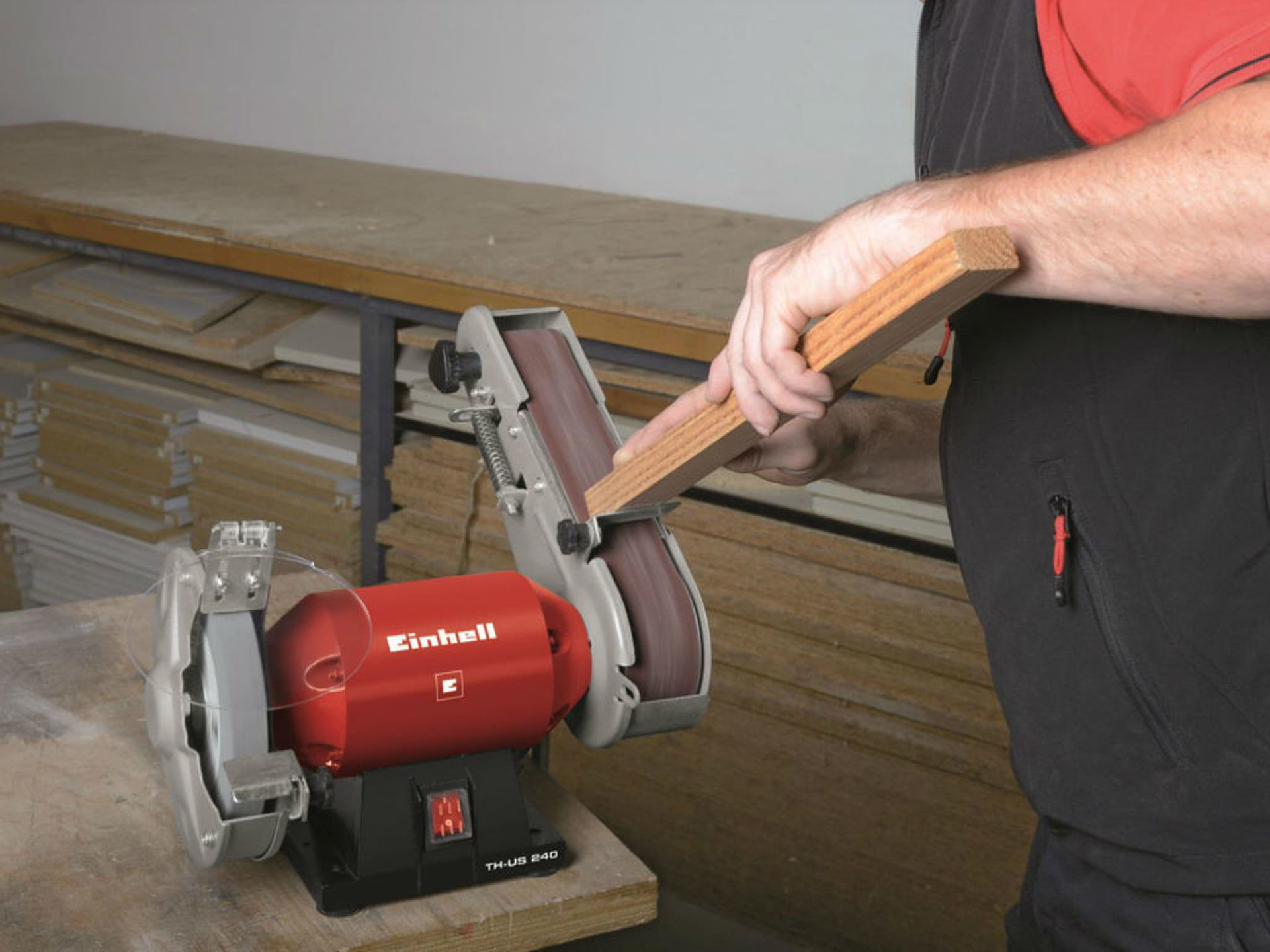The bench grinder in the spotlight
In almost every workshop there is one: a bench grinder. Why are they so common, what are they used for and what variants are there? Lean back and follow us on the (grinding) track of the bench grinder.
Basic Principles of a Bench Grinder
Basically, a Bench Grinder is an electric motor with a shaft on the right and on the left, with a grinding wheel mounted each. The shafts should be as ball bearing as possible, so that they run perfectly and thus bring reasonable grinding results. The motor runs the two grinding wheels with which the surface of the respective workpiece can be machined. The higher the power of the motor is, the larger workpieces can be processed. Sounds easy, which it is exactly.

The Grinder Disks
The main task when working with the Bench Grinder is carried out by the grinding disks. As a rule, grinding disks with different grain sizes are used, common are the grits 24/36/60/80. There is always one disk for coarser and one for finer work. The grinding disks are made of silicon carbide or corundum and are available in the sizes 150 mm, 175 mm and 200 mm. The speed of almost all bench grinders is between 2800 and 3000 rpm.
Fields of Application of a Bench Grinder
Bench grinders are ideal for metalworking. Whether workpieces are deburred, rounded off, or simply sanded, the bench grinder and coarse grinding disk make this very easy. With the fine grinding wheel, the edges can be removed even finer.
Much more important, however, is the ability to sharpen drills or cutting tools, such as knives or chisels. Just make sure that these tools do not burn out during grinding. All bench grinders must be equipped with so-called spark protection glasses. These shatter-proof lenses ensure a clear view of the workpiece to be machined, but they reliably detect the resulting flying sparks.
Furthermore, all double grinders are equipped with an adjustable support. The workpiece rests on this support during grinding, so that it can be safely guided despite vibrations. These pads are adjustable because the disc reduces its diameter over time due to wear. The gap between the support surface and the grinding wheel should be no more than two millimeters so that no workpiece can be wedged in it. Regular checks and readjustments are therefore very important.

Variants and Special Models
There are hundreds of variants that are specifically geared to the respective tasks. For the do-it-yourselfers, there are some standard models, which we briefly list here:
Wet-Dry Grinder
Especially for grinding work on knives, chisels, drills, etc., the wet and dry grinder is the specialist. One grinding wheel is for rough grinding and the other one is slightly larger, wider and finer. It rotates much slower (about 130-140 rpm) and runs through a water bath to cool the workpiece during grinding. Annealing is prevented by these two factors and provides razor-sharp results.


Stationary Belt Grinder
Again a machine, you can use on various applications, this time with a rough grinding wheel and a belt sander. These machines are used a lot in the wood sector, whereby the sanding belts also tolerate metal.


Sander Polisher
This machine not only has significantly smaller discs, but also a long, flexible shaft on which special grinding and separating attachments can be operated, just like with a gravure tool. The coarse grinding wheel and the polishing wheel can be adjusted to the ideal speed by means of a rotary control.
Useful Equipment
Grinding Dresser
Since the grinding wheels not only become smaller over time, but also wear unevenly, the grinding pattern deteriorates. The remedy is a grinder dresser with which the grinding wheels can be brought into shape again.
Work Lamp
Of course, the better the light conditions, the better the work piece can be processed. This is especially important when grinding drills. I hope we could give you an interesting insight into the world of double grinders. Most do‐it‐yourselfers do not even realize how useful they are. Maybe you should once again work on your grinding wheels with a grinding dresser, the result is definitely worth it.





